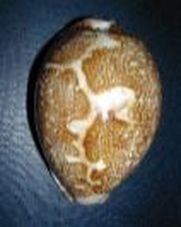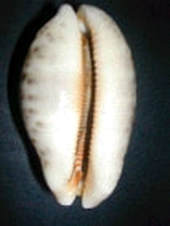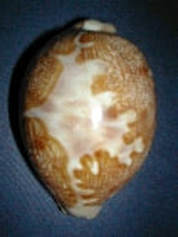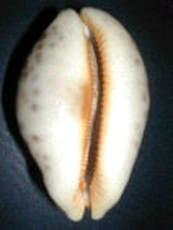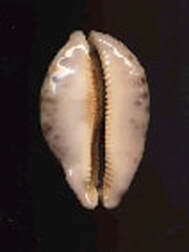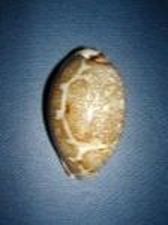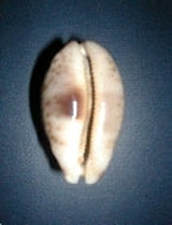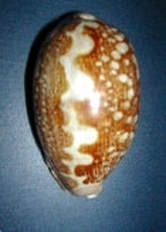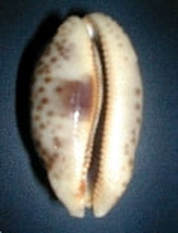A new form of Leporicypraea mappa viridis
by John Batt
Photography by John Batt
Photography by John Batt
If you recall in the previous issue of Pallidula [April 2004] I remarked within my article on shelling in New Caledonia upon an unusual population of Leporicypraea mappa viridis from deeper water on the main reef 9 miles off Noumea. This form of viridis has been known for some time but as far as I know has not been collected in recent years and has never had a name attributed to it.
I stated that I wish to propose the forma name L. mappa viridis "kanakinus" (relating to the New Caledonian native Kanak people) as an ideal forma name for these very different map cowries. I mentioned that the three specimens that I acquired on the trip differed from typical L. mappa viridis as well as from L. mappa viridis "montrouzieri" by being far more callus around the margins, having a somewhat rhomboidal shape, extending further at the canals and, most importantly, lacking the prominent dark basal blotch as always seen in the other map cowries from this area. There are no significant differences in the fossula but the teeth of "kanakinus" seem to be a brighter more solid orange than its relatives in the area. It seems to me to be a great shame that such an unusual population of this subspecies should be ignored and I firmly believe that due to its consistent differences certainly deserves a name at least for the time being at forma level. It may well represent a link between the nominate L. mappa mappa and L. mappa viridis. Pictured here are the three specimens in question showing dorsal and basal views and below them for comparison a typical L. mappa viridis from Guam and a typical specimen of L. mappa viridis "montrouzieri".
Holotype: L. m. "kanakinus" – 85.7mm – Collection J. Batt
Paratype 1: L. m. "kanakinus" – 85.7mm – Collection J. Batt
Paratype 2: L. m. "kanakinus" 79mm - Collection J. Joseph
These three specimens were all collected by diver under coral heads at 24–5m in the late 1980s off Noumea, New Caledonia.
The new L. mappa viridis "kanakinus" differs from the nominate L. mappa mappa by its far more callus margins and extended broad flanging canals, as well as having much brighter teeth and larger more crowded marginal spotting.
L. m. viridis (Kenyon, 1902) – Guam, collected under dead coral at 12m – 49.9mm – Collection J. Batt
L. m. "montrouzieri" Dautzenberg, 1903 – collected under dead coral at 8m – Collection J. Batt
This article by John Batt was first published in our magazine Pallidula in October 2004.

